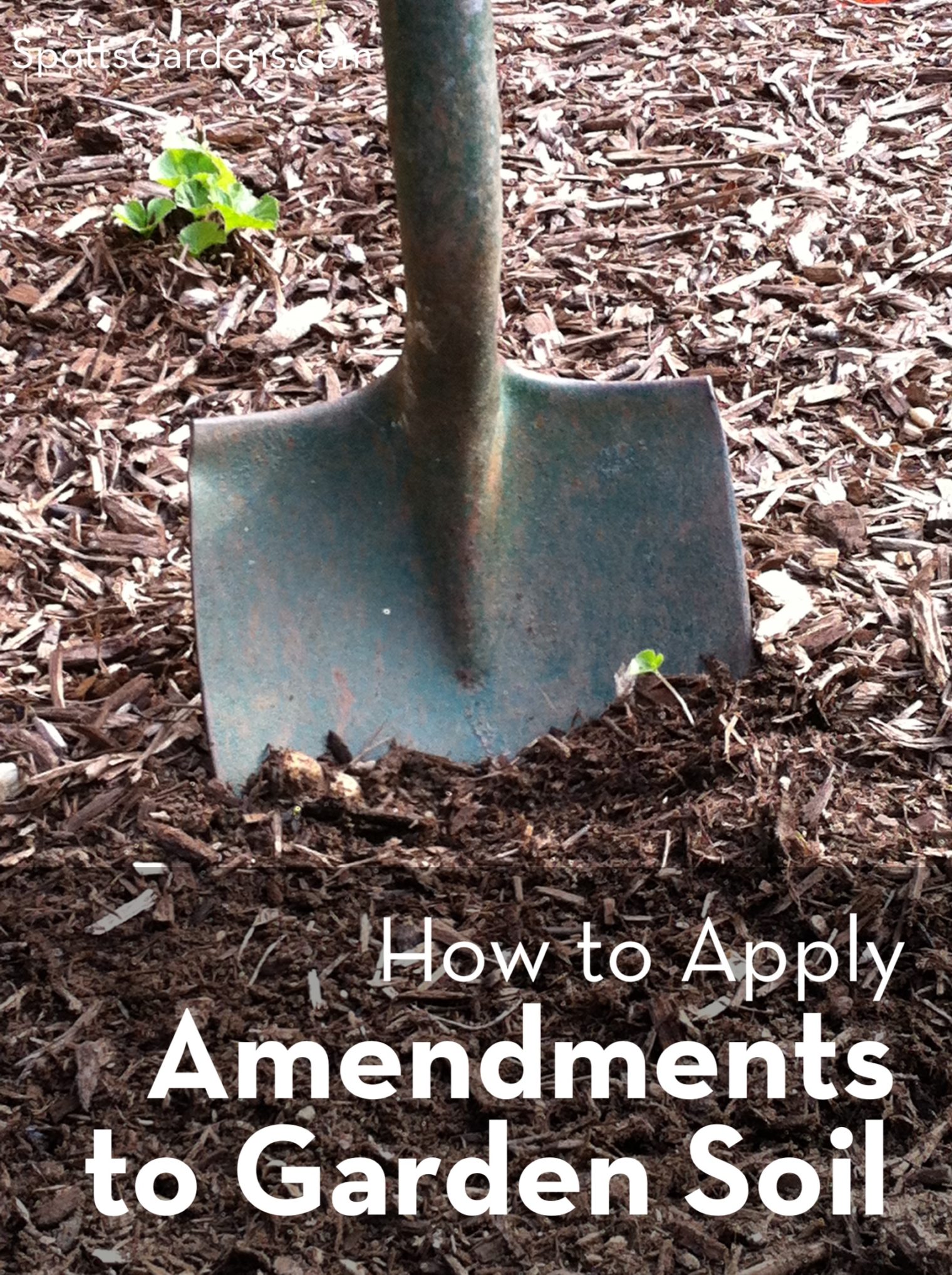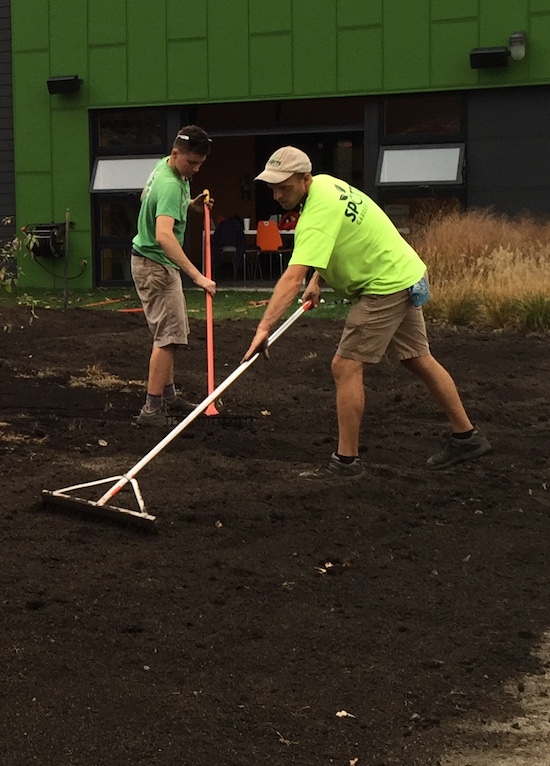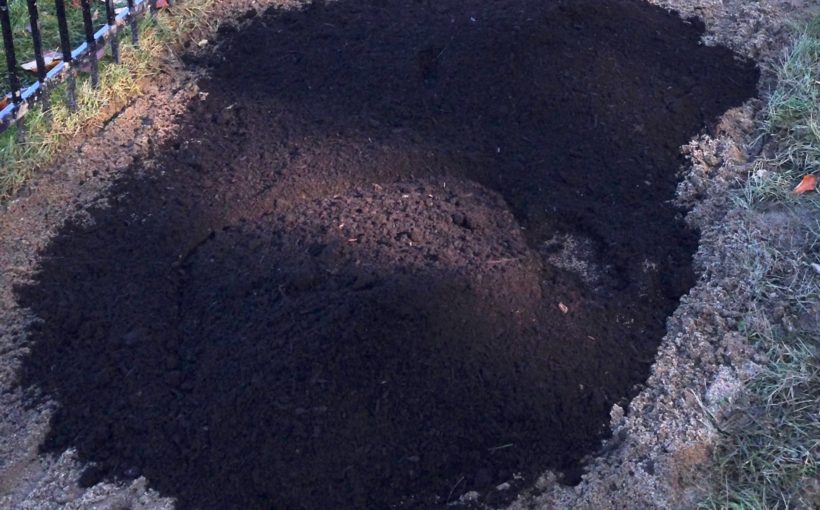In other posts, we discussed the basics of soil composition, plant nutrients, and soil pH. If you’ve taken a soil test, you know exactly what your soil makeup looks like and the current pH. But what if you want to change it? That’s where garden soil amendments come in.
Amending your soil boils down to a three-step process:
- Read the application rate on the package, or look it up on the internet.
- Measure the space.
- Calculate and apply the necessary amendment, either by weight (in pounds) or by volume (in yards or cubic feet).

1. Apply As Directed
Fertilizers and Soil Sulfur
If you’re using an amendment like soil sulfur or bonemeal that comes in a package, read the bag for the application rate. It will say something like “Apply at a rate of 2 pounds per 100 square feet.” Follow the directions!
Compost
We believe in matching the plant to the soil instead of trying to adjust the soil to the plant. As a result, we don’t usually spread compost in regular garden beds. (Instead, we add a little compost around plants in spring to give them a gentle boost.)
But we do spread compost annually in food beds. You take nutrients out of the soil every time you harvest, so you have to put them back in.
We also add compost to newly created garden beds; that compost makes the soil more hospitable to the new plants as they settle in. Once they’re in, we expect those plants to toughen up and deal with the soil as-is.
While agricultural engineers will do specific calculations to determine nutrient delivery, most gardeners just dump in as much compost as they have. Figure on applying about 1″ of compost annually to decent kitchen garden beds and 2″ to 3″ to beds that need more organic material.
2. Measure it!
Before adding any garden soil amendments, measure the space. You need to know the area in square feet.
Rectangle: Area = width x length
For example: if the width is 10′ and the length is 12′, then 10′ x 12′ = 120 square feet
Triangle: Area = .5 x width x length
For example: if the bed is 11′ wide at its widest point and 9′ long, then the area is (.5) x 11′ x 9′ = 49.5 square feet
Curve: Curved beds are easiest to measure by breaking them into smaller pieces. Imagine a rectangle laid over the bulk of the garden, and measure the width and length of that rectangle to find the area. Then estimate the area under the curve, and add it to the area of the rectangle.

3. Add Amendment by Weight or Volume
Amending by Weight
To figure out how much of an amendment you need by weight, multiply the square footage by the application rate on the package.
For example, if the application rate is 2 pounds per 100 square feet, and the bed is 350 square feet:
- (2 pounds / 100 square feet) x 350 square feet = 7.0 pounds
You need 7 pounds of your amendment. Use a scale to measure out the appropriate weight.
You can either hand-broadcast that amendment or use a seed spreader to apply the amendment over the entire area you measured. Be sure to follow the package directions.
Amending by Volume
This technique works when dealing with garden soil amendments that are usually sold by the cubic yard, like compost, topsoil, and mulch. To calculate how much you need:
- Decide how thick a layer of compost you want to put down, then convert that to feet.
- Multiply that number by the square footage to get the volume in cubic feet.
- Divide by 27 (number of cubic feet in a cubic yard).
For example, if you want to apply 3″ of compost to a 200 square foot bed:
- 3″ layer of compost/ 12″ per foot = .25 feet
- .25 feet x 200 square feet = 50 cubic feet
- 50 cubic feet/ 27 = 1.85 cubic yards
You need 1.85 cubic yards of compost.
When spreading compost, dump it on top of the soil and rake it out. Then work the compost in using a shovel or broadfork. If you apply the compost in fall, you can just rake it in and let the winter rains work it into the soil.
Spotts Garden Service can test and amend soil for you! Contact us today for a free estimate.
